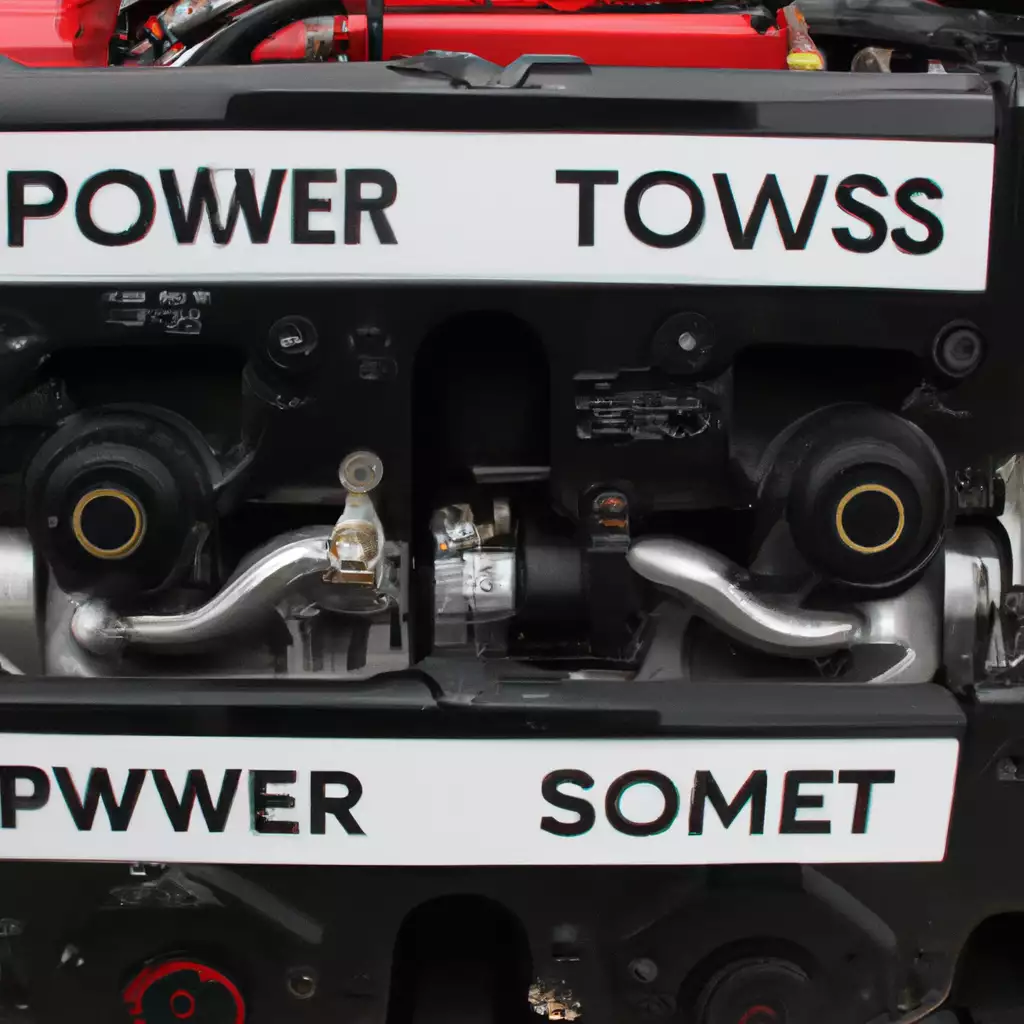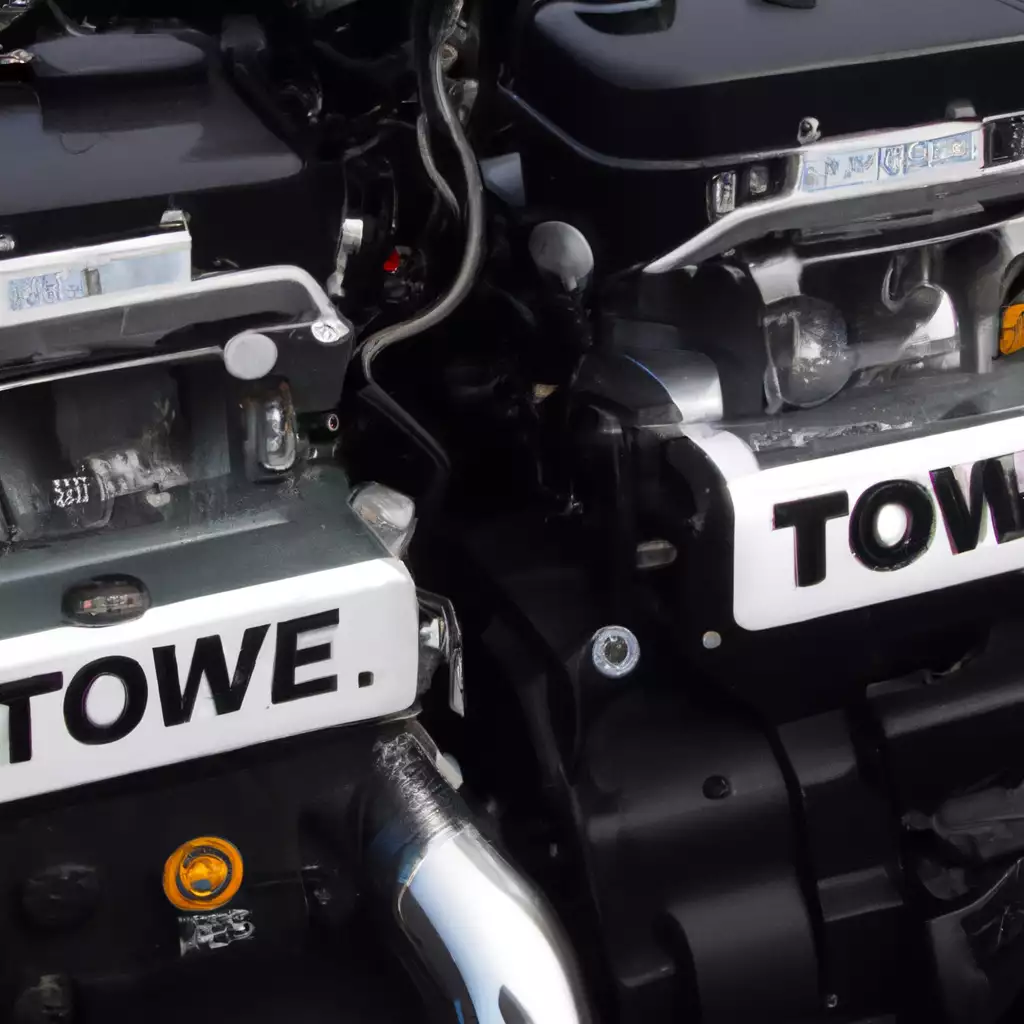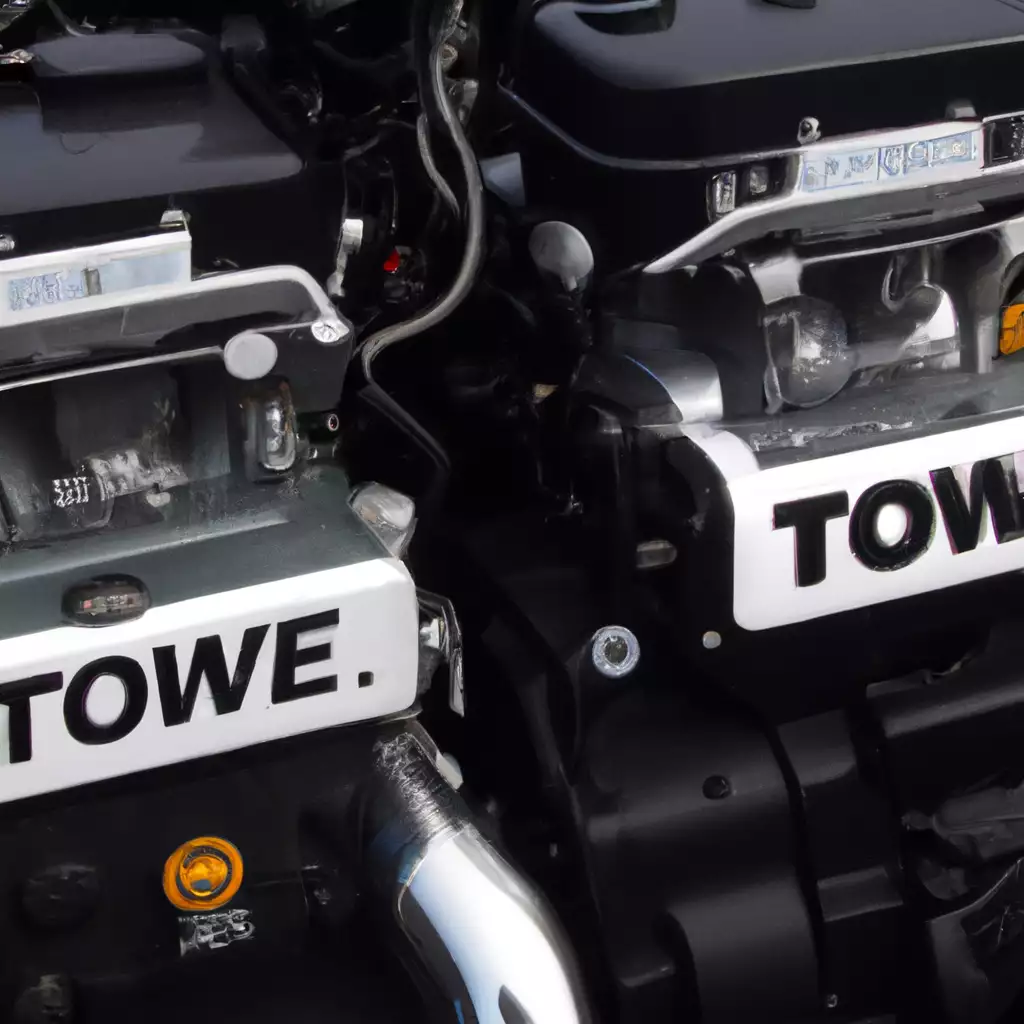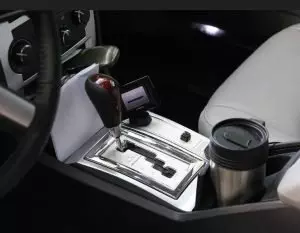When it comes to towing, the choice of engine can make all the difference. Whether you’re hauling heavy loads for work or planning a weekend getaway with a trailer in tow, it’s essential to have the right engine power to ensure a smooth and efficient towing experience. But with various engine options available in the market, selecting the ideal one can be a daunting task. In this article, we will explore the key factors to consider when determining which engine is better suited for your towing needs, providing valuable insights to help you make an informed decision.

Fuel Type
When it comes to selecting the right engine for towing, the choice of fuel type plays a significant role. The three main options to consider are gasoline, diesel, and electric engines.
Gasoline
Gasoline engines are the most common choice for everyday vehicles due to their widespread availability and relatively low initial cost. They are typically lighter and more compact than diesel engines, making them a popular choice for smaller vehicles or those with less towing capacity. However, gasoline engines may struggle to provide the same level of torque and power as their diesel counterparts, especially when faced with heavy loads or steep inclines.
Diesel
Diesel engines have long been favored for their robustness and exceptional towing capabilities. The high-compression design of diesel engines allows for more torque production, making them ideal for hauling heavy loads or towing large trailers. Diesel engines also offer better fuel efficiency, particularly when towing over long distances or at higher speeds. While diesel engines can be more expensive upfront and may require additional maintenance, their durability and performance make them an attractive option for those who frequently tow heavy loads.
Electric
Electric engines are a promising and increasingly popular option for towing, particularly for environmentally conscious individuals. Electric engines offer instant torque, providing impressive acceleration and towing capabilities. They are also much quieter and produce zero emissions, making them an attractive choice for those seeking a greener towing solution. However, electric engines currently face limitations in terms of range and charging infrastructure, which may be a drawback for longer trips or remote locations. As technology continues to evolve, electric engines are expected to become a more viable option for towing in the future.
Engine Size
The engine size is another crucial factor to consider when selecting an engine for towing. The size of the engine determines its power output, which directly impacts towing capacity.
Small Engine
Small engines often have lower towing capacities due to their limited size and lower power output. They are typically found in compact or mid-size vehicles and are suitable for light towing needs, such as small trailers or lightweight cargo. While small engines may lack the raw power and torque of larger engines, they can still provide adequate performance for everyday towing tasks.
Medium Engine
Medium-sized engines strike a balance between power and efficiency, making them well-suited for various towing applications. They offer a moderate level of power and torque, making them suitable for towing mid-sized trailers or hauling heavier loads. Medium engines are commonly found in mid-size or full-size vehicles, providing a reliable and versatile option for towing needs.
Large Engine
Large engines are designed for heavy-duty towing requirements and can deliver substantial power and torque. They are commonly found in trucks and SUVs specifically built for towing large trailers or hauling heavy loads. The robust nature of large engines ensures that they can handle challenging towing conditions and provide the necessary muscle for demanding towing tasks.
Torque
Torque is an essential characteristic to consider when selecting an engine for towing. It determines the engine’s ability to exert rotational force, directly influencing its towing capacity.
Low Torque
Engines with low torque output may struggle to tow heavy loads or handle steep inclines. They are better suited for light towing needs or everyday driving scenarios where minimal power is required. While low torque engines may lack the pulling power of their counterparts, they can still provide adequate performance for smaller trailers or lighter cargo.
Moderate Torque
Engines with moderate torque output strike a balance between power and fuel efficiency. They offer enough torque to handle mid-sized trailers or moderately heavy loads without compromising on everyday drivability. Engines with moderate torque are well-suited for a variety of towing applications and can provide a reliable and efficient towing experience.
High Torque
Engines with high torque output excel in towing heavy loads and conquering challenging terrains. They are designed to deliver exceptional pulling power, making them ideal for heavy-duty towing requirements. Engines with high torque can effortlessly handle large trailers, steep inclines, or off-road conditions, ensuring a confident and capable towing experience.
Horsepower
While torque focuses on an engine’s rotational force, horsepower reflects the overall power output. When it comes to towing, having sufficient horsepower is crucial for efficient and effective performance.
Low Horsepower
Engines with low horsepower may struggle to provide the necessary power for heavy towing. They are better suited for light towing needs or everyday driving situations where minimal power is required. While low horsepower engines may lack the high-performance capabilities of their counterparts, they can still offer adequate power for smaller trailers or lightweight cargo.
Moderate Horsepower
Engines with moderate horsepower strike a balance between power and fuel efficiency. They provide enough horsepower to handle mid-sized trailers or moderately heavy loads without sacrificing everyday drivability. Engines with moderate horsepower are versatile options for various towing applications, delivering a reliable and efficient towing experience.
High Horsepower
Engines with high horsepower excel in providing the raw power necessary for heavy-duty towing. They are designed to deliver exceptional horsepower, ensuring effortless acceleration and towing capabilities. Engines with high horsepower can handle large trailers, steep inclines, or challenging conditions with ease, guaranteeing a confident and powerful towing experience.

Transmission
The choice between automatic and manual transmissions can also impact the overall towing performance and ease of operation.
Automatic
Automatic transmissions are the most common choice for towing, primarily due to their convenience and ease of use. They offer smooth and seamless gear changes, eliminating the need for the driver to manually shift gears. Automatic transmissions are well-suited for towing as they can adapt to varying loads and driving conditions, ensuring optimal performance and efficiency.
Manual
Manual transmissions require the driver to manually shift gears using a clutch pedal and gearstick. While traditionally popular among driving enthusiasts, manual transmissions can offer advantages for towing. They provide more control over gear selection, allowing the driver to choose a lower gear to access more torque when towing heavy loads or traversing challenging terrains. However, manual transmissions require additional skill and concentration, and may not be as user-friendly for towing in certain scenarios.
Drive Train
The drive train configuration determines which wheels provide power to the vehicle and can influence its traction and stability during towing.
Rear-Wheel Drive (RWD)
Rear-wheel drive configurations deliver power to the rear wheels, providing a more balanced weight distribution and improved handling characteristics. RWD vehicles are known for their stability during towing, as the weight of the load is distributed more evenly between the front and rear axles. This configuration is commonly found in trucks and larger SUVs, making them popular choices for towing heavy trailers or hauling substantial loads.
Front-Wheel Drive (FWD)
Front-wheel drive configurations deliver power to the front wheels, making them more common in smaller vehicles or passenger cars. FWD vehicles have a weight distribution that favors the front end, which can result in reduced stability during towing compared to RWD configurations. While FWD vehicles may have limitations in terms of towing capacity, they can still provide sufficient performance for lighter trailers or cargo.
All-Wheel Drive (AWD)
All-wheel drive configurations distribute power to all four wheels, providing improved traction and stability across various driving conditions, including towing. AWD vehicles continuously monitor wheel slippage and automatically adjust power distribution accordingly, ensuring optimal grip and performance. AWD systems are particularly beneficial when towing in challenging terrains or adverse weather conditions, providing enhanced control and confidence.
Four-Wheel Drive (4WD)
Four-wheel drive configurations, also known as 4WD, provide the ability to manually engage or disengage all four wheels simultaneously. 4WD systems are commonly found in off-road vehicles or trucks designed for rugged terrain and heavy towing. Engaging 4WD mode maximizes traction and torque distribution, ensuring exceptional towing capabilities and maneuverability in demanding conditions.
Weight Distribution
Proper weight distribution is essential for safe and stable towing. It dictates how the weight of the load is distributed between the front and rear axles of the vehicle.
50:50
A 50:50 weight distribution refers to an equal distribution of weight between the front and rear axles. This balance ensures stability and optimal handling during towing, as it prevents the vehicle from becoming front or rear-heavy. A 50:50 weight distribution is desirable for towing heavy loads, as it allows for better control and reduces the risk of overloading or swaying.
Front-Heavy
A front-heavy weight distribution means that a majority of the load’s weight is concentrated towards the front of the vehicle. This imbalance can affect the vehicle’s stability and steering response during towing, potentially leading to reduced control and compromised safety. Front-heavy weight distribution is typically avoided, especially when towing heavy loads, as it can cause the rear end of the vehicle to lift and impact overall towing performance.
Rear-Heavy
A rear-heavy weight distribution means that a majority of the load’s weight is concentrated towards the rear of the vehicle. This imbalance can lead to inadequate weight on the front axle, affecting steering control and stability during towing. Rear-heavy weight distribution should be avoided, as it can cause the front end of the vehicle to lift and potentially compromise braking effectiveness and overall towing safety.
Vehicle Class
The classification of a vehicle plays a role in determining its towing capabilities. Different vehicle classes are designed for specific purposes and have varying towing capacities.
Compact
Compact vehicles are generally smaller in size and offer limited towing capacities. They are typically designed for everyday commuting and may not be suited for towing heavy loads or larger trailers. Compact vehicles can handle light towing needs, such as small utility trailers or lightweight cargo, but may face limitations when it comes to towing heavier loads.
Mid-Size
Mid-size vehicles strike a balance between compact and full-size vehicles, offering moderate towing capacities. They provide more space and power compared to compact vehicles, allowing for towing mid-sized trailers or hauling moderately heavy loads. Mid-size vehicles are a popular choice for individuals seeking versatility and towing capabilities without requiring the size and power of a full-size vehicle.
Full-Size
Full-size vehicles, such as trucks and SUVs, are designed for towing heavy loads and hauling substantial cargo. They offer robust engines, larger frames, and increased towing capacities, making them ideal for individuals with demanding towing requirements. Full-size vehicles can handle towing larger trailers or hauling heavier loads, ensuring a confident and capable towing experience.
Heavy-Duty
Heavy-duty vehicles are specifically built for towing and hauling extremely heavy loads. They are commonly used for commercial purposes, such as towing large equipment or transporting significant cargo. Heavy-duty vehicles offer the highest towing capacities and can handle the most demanding towing tasks with ease. These vehicles are equipped with powerful engines, reinforced frames, and specialized suspension systems to ensure optimal towing performance and durability.
Cooling System
The type of cooling system utilized by an engine can impact its performance and ability to withstand the demands of towing.
Air-Cooled
Air-cooled engines employ cooling fins or fans to dissipate heat generated by the engine. They are commonly seen in smaller vehicles, motorcycles, or recreational vehicles. While air-cooled engines are generally simpler in design and require fewer maintenance tasks, they are typically not suitable for heavy-duty towing due to their limited cooling capabilities. Continuous towing or hauling heavy loads can cause air-cooled engines to overheat, potentially leading to reduced performance or engine damage.
Liquid-Cooled
Liquid-cooled engines utilize a coolant or antifreeze mixture to regulate and dissipate heat generated by the engine. This type of cooling system is more commonly found in larger vehicles, including trucks and SUVs. Liquid-cooled engines offer better cooling capabilities, ensuring that the engine can withstand the demands of towing without overheating. The use of a coolant also allows for more precise temperature control, contributing to overall engine longevity and reliability when towing heavy loads.
Gear Ratios
Gear ratios can significantly impact the overall towing performance and the ability to handle varying driving conditions.
Lower Gear Ratios
Lower gear ratios, also known as numerically higher gear ratios, provide more torque at lower speeds. They are particularly useful for towing heavy loads or when facing steep inclines. Lower gear ratios allow the engine to operate at higher RPMs, ensuring optimal power delivery and pulling force. Vehicles equipped with lower gear ratios are capable of maintaining momentum and overcoming challenging towing conditions with ease.
Higher Gear Ratios
Higher gear ratios, also known as numerically lower gear ratios, focus on providing better fuel efficiency at higher speeds. They are beneficial when towing over long distances or on flat terrain. Higher gear ratios allow the engine to run at lower RPMs, reducing fuel consumption and engine strain during towing. While higher gear ratios may sacrifice some pulling power compared to lower gear ratios, they offer improved efficiency, making them suitable for towing consistent with highway driving.
In summary, selecting the right engine for towing involves careful consideration of various factors, including fuel type, engine size, torque, horsepower, transmission, drive train, weight distribution, vehicle class, cooling system, and gear ratios. Each of these elements contributes to the overall towing capabilities and performance of a vehicle. By understanding the characteristics and advantages associated with each option, you can make an informed decision that aligns with your specific towing needs and preferences. Whether you prioritize raw power, fuel efficiency, or environmental friendliness, there is an engine configuration available to enhance your towing experience.



